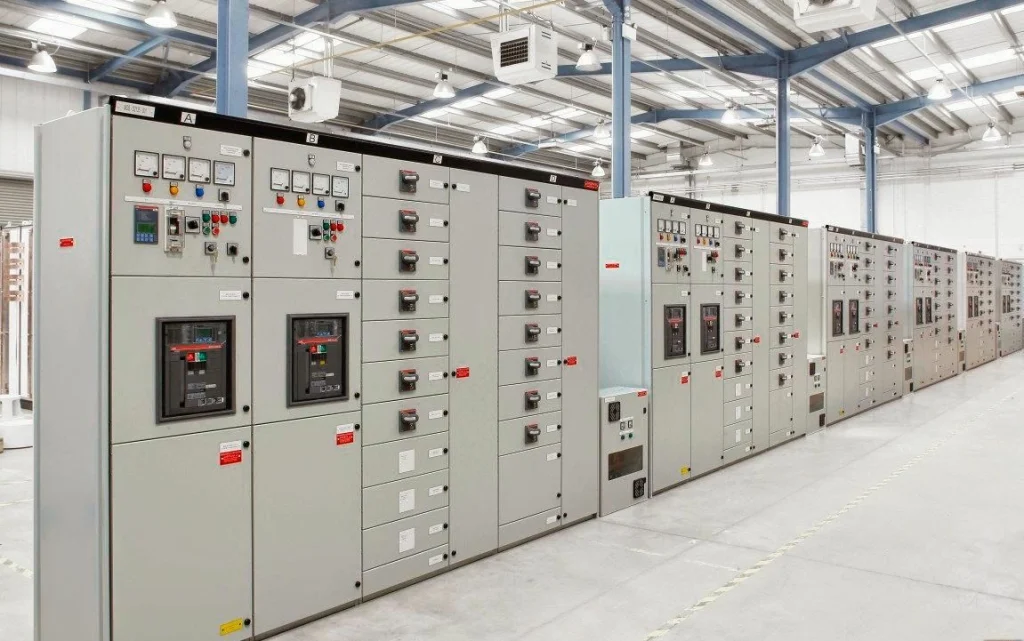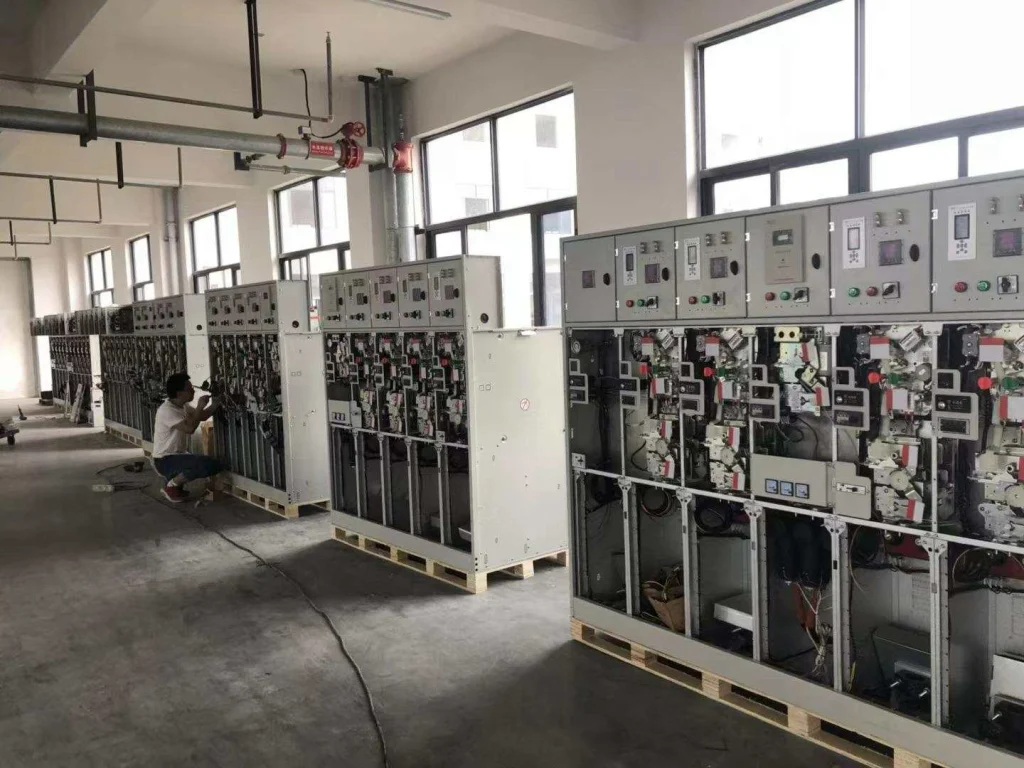The Difference Between Low Voltage and High Voltage Distribution Rooms
In modern power systems, distribution rooms are crucial for efficient and safe electricity supply. These rooms are generally divided into low voltage distribution rooms and high voltage distribution rooms, each serving different purposes based on voltage levels, equipment configurations, application scenarios, and maintenance requirements. This article will explore the key differences between low voltage and high voltage distribution rooms to help readers understand their respective roles and how to choose between them.
What is a Low Voltage Distribution Rooms?

A low voltage distribution room is a facility used to distribute and manage low-voltage electricity, typically operating at voltages below 1,000 volts. It is responsible for distributing power to various electrical equipment or end users and provides monitoring, protection, and control of the power supply. Low voltage distribution rooms are common in residential areas, commercial buildings, and small industrial facilities, serving as the final step in delivering electricity to end users.
Key Equipment in Low Voltage Distribution Rooms

- Low Voltage Switchgear: Controls and protects the electrical system, including air circuit breakers and load switches.
- Distribution Box: Responsible for distributing electricity over short distances.
- Automation Control Equipment: Monitors power usage, enabling remote operation and control.
- Cable Trays: Used to route and protect electrical cables, ensuring safe power transmission.
Application Scenarios for Low Voltage Distribution Room
- Residential and Office Buildings: Low voltage distribution room primarily serve households and everyday commercial power needs, ensuring reliable electricity supply.
- Small Industrial Facilities: Some small industrial enterprises also use low voltage systems to manage and distribute internal power loads.
Characteristics of Low Voltage Distribution Room
- High Safety: With lower voltage levels, low voltage distribution room pose minimal risk during operation and maintenance.
- Small Footprint: Typically installed indoors or in basements, they take up relatively little space.
- Low Maintenance Costs: The equipment is simpler, making maintenance and operational costs relatively low.
What is a High Voltage Distribution Rooms?
A high voltage distribution room is a facility that handles high-voltage electricity, typically above 1,000 volts. It connects to substations, distributing high-voltage power to various users or stepping down the voltage via transformers for further distribution to end users. High voltage distribution rooms are critical nodes in power systems, commonly found in large industrial facilities, substations, and city grids.
Key Equipment in High Voltage Distribution Room
- High Voltage Switchgear: Used to open and close high-voltage circuits, ensuring system safety by cutting power during faults.
- High Voltage Transformers: Step down high-voltage electricity to suitable levels for distribution to end users.
- Busbar Systems: These serve as the central point for power distribution within the room.
- Surge Arresters: Protect the system from lightning strikes and voltage overloads.
Application Scenarios for High Voltage Distribution Room
- Large Industrial Facilities: High voltage distribution rooms power large equipment in sectors like metallurgy and chemical plants.
- Substations: They are integral to substations, distributing power from generation stations.
- City Grids: High voltage distribution rooms ensure the efficient operation of urban power grids.
Characteristics of High Voltage Distribution Room
- High Power Capacity: They handle large loads and high currents, suitable for large-scale users.
- High Safety Requirements: Due to the inherent dangers of high-voltage equipment, strict safety measures and trained personnel are essential.
- Large Footprint: High voltage equipment is bulkier, requiring more space for installation and cooling.
- High Maintenance Costs: Given the complexity of the equipment, regular maintenance and higher operational costs are required.
Key Differences Between Low Voltage and High Voltage Distribution Rooms
| Aspect | Low Voltage Distribution Room | High Voltage Distribution Room |
|---|---|---|
| Voltage Level | Below 1,000 volts | Above 1,000 volts |
| Main Applications | Residential, commercial buildings, small industry | Large industry, grid backbone, substations |
| Key Equipment | Low voltage switchgear, distribution boxes | High voltage switchgear, transformers, surge arresters |
| Safety | Higher safety, simpler operation | Higher risk, requires professional handling |
| Space Requirements | Small, can be installed indoors or underground | Larger, requires a separate building |
| Maintenance | Simple, lower costs | Complex, requires regular inspection, higher costs |
Technical Differences in Equipment and Design
- Insulation Requirements
High voltage distribution rooms require much higher insulation standards compared to low voltage rooms. High voltage equipment uses thicker insulation and specialized protective materials to prevent arcing and electrical breakdowns. In contrast, low voltage distribution rooms have simpler insulation needs and shorter air gap requirements. - Cooling Systems
High voltage equipment generates significant heat during operation, so high voltage distribution rooms typically feature forced cooling systems such as ventilation or liquid cooling to prevent overheating. Low voltage distribution rooms, on the other hand, generally rely on natural ventilation for heat dissipation. - Level of Automation
High voltage distribution rooms often integrate advanced automation systems, such as real-time monitoring and remote control, to manage complex power requirements and handle emergencies. In comparison, low voltage rooms use simpler control systems, often operated manually or with limited automation.
How to Choose the Right Distribution Rooms?
Choosing between a low voltage or high voltage distribution room depends on the user’s power needs and the specific application scenario. For residential or small commercial areas, a low voltage distribution room is sufficient. For large industrial facilities or settings that require handling high power loads, a high voltage distribution room is the better choice.
Consider the following factors when making a decision:
- Power Load: Choose the appropriate distribution room based on the total power load of the equipment.
- Site Conditions: Low voltage rooms can be installed indoors or underground, whereas high voltage rooms often require a separate building and more space.
- Maintenance Capacity: High voltage rooms require specialized personnel for maintenance and regular inspections.
Conclusion
Although low voltage and high voltage distribution rooms serve different roles within the power system, they are both essential for ensuring reliable power distribution. Understanding their differences helps engineers make better design decisions and ensures users can choose the appropriate power equipment for their needs.
Table of Contents
Have you Any Questions?
Can’t find an answer to your question, or want more information about our products? If so, please feel free to get in touch with our professional team. We’re here to help you drive your projects to success.
